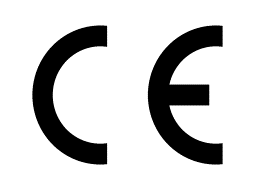
General
This
information leaflet is intended for manufacturers of electrical
equipment covered by the Low voltage Directive (73/23/EEC).
What is
covered by the directive?
The
directive defines low voltage equipment as being:
".. products intended to be used at a nominal ac-voltage
between 50V and 1000V (or a dc-voltage between 75V and 1500V).."
The
scope of the definitions above is comprehensive. However, the directive
excludes a number of product-categories, such as kWh-meters, plugs and
sockets and elevator-installations.
If
the risks associated with an appliance are primarily of an electrical
nature, the Low Voltage Directive is exclusively applicable.
Motor-operated electrical appliances, which can be considered a machine,
with electrical as well as mechanical hazards, are covered by both the
Low Voltage Directive and Machinery-Directive.
A
number of typically electrical devices may be covered by specific
EU-Directives, e.g. for Active Implantable Devices and for
Telecommunication Terminal Equipment special directives have been
issued. For most electrical equipment the requirements of the
EMC-Directive are to be considered.
When did the
directive come into force?
The
Low Voltage directive is one of the first EU-Directives; it was adopted
in 1973. Although the New Approach had not yet been developed, the basic
principle of the directive is identical to that of the New Approach,
i.e. generally formulated essential requirements concerning the
electrical safety of products.
The
present Low Voltage Directive has come into force on January 1st, 1995,
after which there has been a two-year transition period, in which CE
Marking is allowed. Starting January 1st, 1997, CE marking on low
voltage equipment is mandatory.
Low Voltage
Directive and CE marking
The
1973 Low Voltage Directive did not provide for the application of CE
marking (thet marking did not exist yet). An amendment to the Low
Voltage Directive was adopted in July 1993. As a result, electrical
appliances and installations covered by the directive are required to
bear the CE marking since then.
Components
of electrical appliances and installations may or may not be provided
with the CE marking. Components with a self-supporting way of
functioning are advised to be marked with the CE Marking. Components
without self-supporting way of functioning may be for general use or for
specific use. Components for general use are advised to be marked with
the CE marking. In every case with components with or without CE
marking, the Technical Construction File and the Declaration of
Conformity shall specify which Directive was considered applicable and
which standard was used to demonstrate compliance with essential
requirements.
Manufacturers
may use components without CE marking in their appliances and
installations on the condition that compliance with all relevant
essential requirements of the overall assembly can be demonstrated.
Conformity
Assessment Modules
In
principle Module A applies. It shall be considered that Module B applies
in the case of electrical machines with a high safety-risk, as
stipulated in the Machinery Directive.
Harmonized
technical standards on many electrical appliances, issued by CENELEC on
the basis of IEC-standards, include stipulations concerning electrical
safety (as required by the Low Voltage Directive) as well as mechanical
hazards (as required by the Machinery Directive). Therefore, if these
standards are complied with, it may be assumed that the essential
requirements of both the Low Voltage Directive and the Machinery
Directive are met.
CEBEC and CE
Marking
Many
electrical products in Belgium bear the CEBEC certification mark. The
government of Belgium designated CEBEC as a voluntary mark in 1977. At
that time, products bearing the CEBEC mark were legally assumed to
conform with the requirements of the 1973 Low Voltage Directive.
The
technical requirements for the CEBEC mark are based on harmonized
standards on safety. Therefore, electrical products that meet the CEBEC
requirements also meet the requirements of the Low Voltage Directive. It
must be considered that most electrical products need also to comply
with the EMC-Directive.
In
the course of history, the CEBEC mark has developed itself into an
equivalent for safety. The mark is requested by consumers requiring
absolute safety of the individual product.
The mark is also
requested by clients in the business-to-business market, requiring
assurance that the product remains unchanged and in accordance with the
requirements on a continuous basis.
CEBEC indicates:
-
safety,
in accordance with harmonized standards,
-
periodic
inspections of products and production,
-
certification
by a reliable, independent, institute
In
the Low Voltage Directive CE Marking indicates safety, in accordance
with essential requirements, stated by the manufacturer.
| |
CE |
CEBEC |
| International standards |
No |
Yes |
| Independent laboratory |
No |
Yes |
| Continued inspection |
No |
Yes |
CEBEC
CEBEC
has been appointed as a Notified Body in the scope of the Low Voltage
Directive under the number 0649. Although this is not a mandatory requirement (Module A),
manufacturers whose products can be considered as "high-risk"
often apply to CEBEC for type testing and third party certification.
Information
For
further information please contact:
CEBEC
Avenue. Fr. Van Kalken 9A, b. 1
B-1070 Brussels (Belgium)
Phone: +32 2 556 00 20
Fax: +32 2 556 00 36
CEBEC provides market access
|
